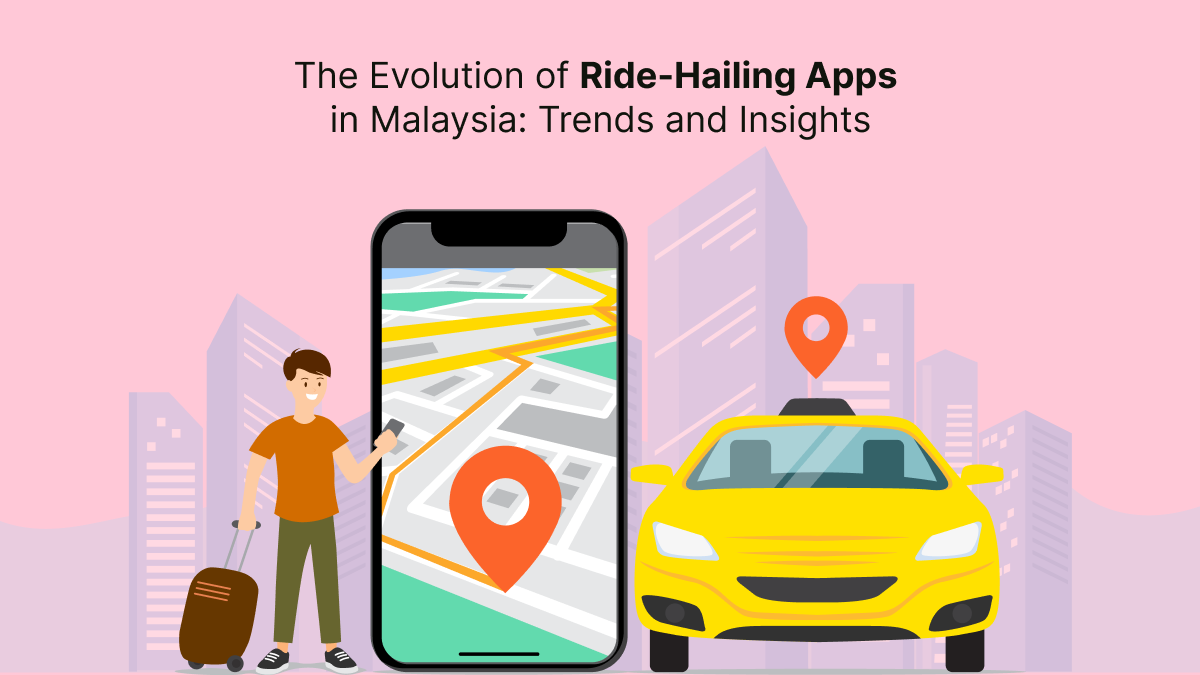The Evolution of Ride-Hailing Apps in Malaysia: Trends and Insights

Ride-hailing apps have transformed the way people commute around the world, and Malaysia is no exception. Over the past decade, Malaysia has seen a rapid growth in ride-hailing services that have changed the transportation landscape for millions. From traditional taxis to app-based bookings, these platforms offer convenience, safety, and affordability like never before.
In this blog, we will explore the journey of ride-hailing apps in Malaysia, key trends shaping the industry, and valuable insights for both users and business owners. Whether you are a daily commuter, a driver, or an entrepreneur interested in this sector, understanding the evolution and current trends can give you a clear picture of where the industry is headed.
Early Days of Ride-Hailing in Malaysia
Traditional Transport Challenges
Before ride-hailing apps, Malaysians mainly relied on taxis, buses, and personal vehicles. Taxis often faced issues like lack of availability, inconsistent pricing, and poor service quality. Many people found it hard to book taxis quickly, especially during peak hours or late nights.
Arrival of the First Ride-Hailing Services
The entry of ride-hailing apps like Grab in 2012 began to address these challenges. Grab started as a taxi booking app but quickly expanded into private car rides, motorbike taxis, and more. This app-based model allowed customers to book rides easily using their smartphones, check prices upfront, and rate drivers, leading to improved service quality.
The Growth Phase: More Players Enter the Market
Competition Brings Innovation
With Grab dominating the market, other players such as MyCar, Maxim, and inDriver entered Malaysia’s ride-hailing scene. This competition led to innovations like lower commission rates for drivers, promo codes for passengers, and new ride types such as budget or premium rides.
Motorbike Taxis Gain Popularity
Given Malaysia’s traffic congestion, motorbike taxis became popular, especially for quick, affordable rides in busy cities like Kuala Lumpur. Apps integrated motorbike options to serve more users looking for faster travel during rush hours.
Integration with Digital Payments
The rise of digital wallets and online banking in Malaysia boosted ride-hailing adoption. Customers could easily pay via apps like GrabPay, Boost, or Touch 'n Go eWallet, making the entire experience cashless and more secure.
Key Trends Shaping the Industry Today
Expansion Beyond Ride-Hailing
Many ride-hailing companies have expanded into other services like food delivery, parcel delivery, and even financial services. For example, Grab offers food delivery through GrabFood and payments through GrabPay, turning the app into a one-stop platform.
Focus on Safety and Hygiene
The Covid-19 pandemic brought safety to the forefront. Ride-hailing apps introduced features like driver health checks, mask requirements, contactless payments, and vehicle sanitization. These measures helped regain customer confidence during uncertain times.
Use of AI and Data Analytics
AI is playing a bigger role in ride-hailing apps by optimizing driver allocation, predicting demand, setting dynamic pricing, and enhancing route planning. Data analytics help companies understand user behavior and improve services continuously.
Electric Vehicles (EVs) on the Rise
With Malaysia’s push towards greener transport, ride-hailing apps are starting to integrate electric vehicles into their fleets. This not only reduces pollution but also appeals to environmentally conscious consumers.
User Experience Improvements
Real-Time Tracking and Estimated Arrival Times
Users can now see their ride’s real-time location and get accurate estimated arrival times. This transparency helps reduce wait-time anxiety and improves satisfaction.
Multiple Ride Options
From budget rides to luxury cars, passengers can choose rides based on their budget and preferences. This flexibility attracts a wider customer base.
In-App Support and Feedback
Easy access to customer support and the ability to rate and review drivers encourage better service quality and quick resolution of issues.
Opportunities for Drivers
Flexible Income Source
Many Malaysians choose to drive part-time or full-time with ride-hailing apps. The flexible schedule helps drivers earn extra income while balancing other responsibilities.
Driver Incentives and Bonuses
To keep drivers motivated, companies offer incentives such as peak hour bonuses, referral rewards, and lower commission rates. These help maintain a reliable driver pool.
Challenges Faced by Ride-Hailing Apps in Malaysia
Regulatory Hurdles
The government has set rules to ensure safety and fairness, such as driver licensing and vehicle standards. Complying with regulations can be complex for new entrants.
Competition with Traditional Transport
While ride-hailing is popular, traditional taxis and public transport still serve many Malaysians, especially in rural areas. Integrating with public transit remains a challenge.
Driver Retention and Satisfaction
High driver turnover is a concern. Many drivers leave due to earnings, long hours, or app changes, making it hard to maintain consistent service quality.
Read More: How to Get a Cab in Malaysia: Top 10 Ride-hailing Apps You Need in 2025
Insights for Entrepreneurs and Businesses
Why Build a Ride-Hailing Clone App?
The Malaysian ride-hailing market is still growing with potential for niche services like luxury rides, rides for elderly or disabled, or eco-friendly fleets. Developing a clone app based on proven business models like Grab or inDriver is a cost-effective way to enter the market.
Focus on Local Needs
Customization is key. Local languages, payment preferences, and cultural factors should be considered to connect better with Malaysian users.
Invest in Technology and User Experience
Features like seamless payment options, user-friendly design, and reliable customer support will set your app apart from competitors.
Partnerships Matter
Building strong partnerships with drivers, fleet owners, and payment providers ensures smooth operations and customer satisfaction.
Conclusion
The ride-hailing app industry in Malaysia has come a long way from the early days of unreliable taxi services to a technology-driven ecosystem offering various transport and delivery options. Trends like integration of AI, expansion of services, focus on safety, and green transport show how dynamic this industry is.
For entrepreneurs and businesses looking to enter or expand in Malaysia’s ride-hailing market, investing in scalable and customizable clone apps can be a smart choice. Working with a reliable clone app development company helps you launch faster, cut costs, and tailor your app to meet the unique demands of Malaysian users.
Ride-hailing apps are no longer just a transport option; they are becoming an essential part of Malaysia’s digital economy and daily life.

FAQs
What are the top ride-hailing apps in Malaysia?
Popular apps include Grab, MyCar, Maxim, and inDriver. Each offers different features and ride options to attract users.
Can I start a ride-hailing business with a clone app?
Yes, clone apps are cost-effective, customizable, and ready-made solutions based on successful models, making them ideal for startups.
Are motorbike taxis legal in Malaysia?
Yes, motorbike taxis operate legally but are regulated to ensure safety standards and proper licensing.
How do ride-hailing apps ensure passenger safety?
Apps include features like driver background checks, real-time GPS tracking, in-app emergency buttons, and user ratings.
What payment options are popular in Malaysian ride-hailing apps?
Digital wallets like GrabPay, Boost, Touch 'n Go eWallet, and online banking are widely used along with cash payments.
- Art
- Causes
- Crafts
- Dance
- Drinks
- Film
- Fitness
- Food
- الألعاب
- Gardening
- Health
- الرئيسية
- Literature
- Music
- Networking
- أخرى
- Party
- Religion
- Shopping
- Sports
- Theater
- Wellness

